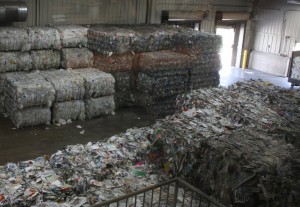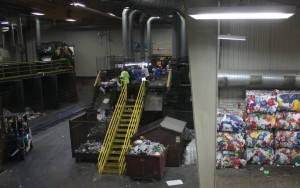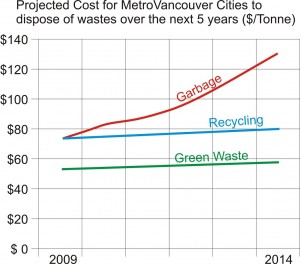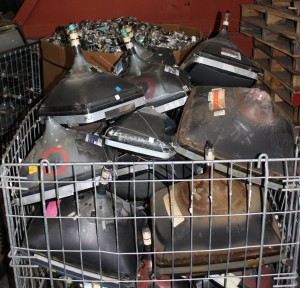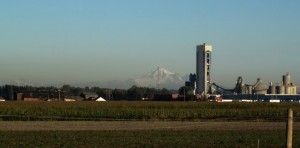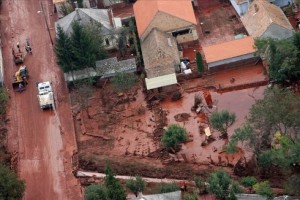Last month when Jim Prentice resigned as Minister of Environment, my initial reaction was “good”, followed quickly be “aw, shit.” Because despite Jim Prentice’s troubles with the portfolio, he might have been the best the Harper Conservatives had to offer in that role.
Harper’s previous picks for Minister of Environment were
Rona Ambrose and John Baird. Ambrose is, of course, the dim-witted Ayn Rand-quoting Calgary ideologue who once suggested a Federal Child Care plan would violate Canadian women’s rights and that the spotted owl population was not threatened just because their total population was reduced to 17 individuals. Rona’s main asset appears to be that Sarah Palin – Christine O’Donnell kinda-puffy former cheerleader vibe that is so damn attractive to puffy white male conservative voters. An asset that puffy white Harper is quick to exploit by assuring she is in the near background whenever you see him speaking in the house.
Here: see if you can play a game of “Find Rona”:
After Ambrose’s embarrassing run as Minister of Environment became too embarrassing, even for Harper, The PM propped Baird into the role, despite the obvious handicap of Baird’s disfigured hand, which prevents him from ever bending his index fingers:
When Baird was eventually replaced by one of the reasonable voices in Harper’s cabinet, one of the few Progressive Conservatives who had not been driven out or dragged down by the PMO, there was room for cautious optimism. And a few good things did manage to get done under Prentice. He made progress on water quality on first Nations reserves, made some useful changes of the CEAA, and even managed to kill the proposal to replace Fish Lake with a tailings pond.
Unfortunately, his failure to secure funding for the CFCAS will be part of his legacy, and was probably part of the reason he found greener pastures in the Private Sector. Anyone with a conscience cannot continue to serve in that portfolio under this Prime Minister, which brings us to John Baird…
Here is the notice I got today from John Baird, as part of his regular press missives. It is a stunning example of cognitive dissonance. In it, he has three points to make:
“We are committed to working with our partners in preventing and preparing for marine environmental emergencies.”
This in the day that the person responsible for evaluating the Government’s preparedness for maritime oil spills
blasted the Ministry for being woefully unprepared, This is not some Eco-terrorist suggesting that the government has it’s head in the sand, or even the opposition passing
a private members bill to protect the coast from being devastated by Alberta’s economic interests, it is the guy the government hired to perform an audit of the very practice he is commenting upon. This is, in effect, John Baird’s employee. For once, pointing a finger at HIM.
What else does John say:
“We are proud of the concrete and measurable action we are taking to implement a strong and comprehensive approach to protect Canada’s waters. This past year alone, Environment Canada has spent more than $140 million on water related programs and science.”
This sounds impressive, but is one quarter of what the US government is spending on water monitoring and protection in the Great Lakes alone, and orders of magnitude less than the subsidies being given to Tar Sands industries that are turning most of Northen Alberta water into emulsion. A fact he might be concerned about if only a single doller of that sampling money was spent measuring for potential Tar Sands impacts on the Athabaska River. But he don’t want to go there.
Finally, the mud in the eye to the few still reading:
“The Government of Canada is also taking action to help Canadians adapt to a changing climate and we are working towards developing a Government-wide adaptation framework.”
So Baird has decided to stop denying climate change, and has decided to think about adapting to it. Mr Baird is sunning his not-unsubstantial buns in Cancun right now, at the UN climate conference. And he is there with, apparently,
a purpose.
And that is his power, with a stright face (and ever straighter finger), John Baird, overseer of environmental responsibility in a Country that has made the least progress (actually, the most negative progress) of any nation since Kyoto, the country that in the last 10 years has gone from a world leader in reductions to a global pariah, is going to show up at Cancun and slam his shoe on his desk. I can’t help but see Baird’s approach to this conference as eerily similar to
Mahmoud Ahmadinejad’s rants to the UN. Both are separated from reality, both show a complete lack of self-awareness, and both completely lack in credibility. These are desperate, distracting rants being delivered by persons who the sane people in the debate have stopped listening to years ago. But he is now Stephen Harper’s closest ally in the house. And even worse, he is Canada’s representive on a world stage.
I ascribe to Hanlon’s Razor: I try not to assume malice when incompetence will suffice. But I think Baird is too smart to be so utterly hopeless. I am left to interpret only evil.













